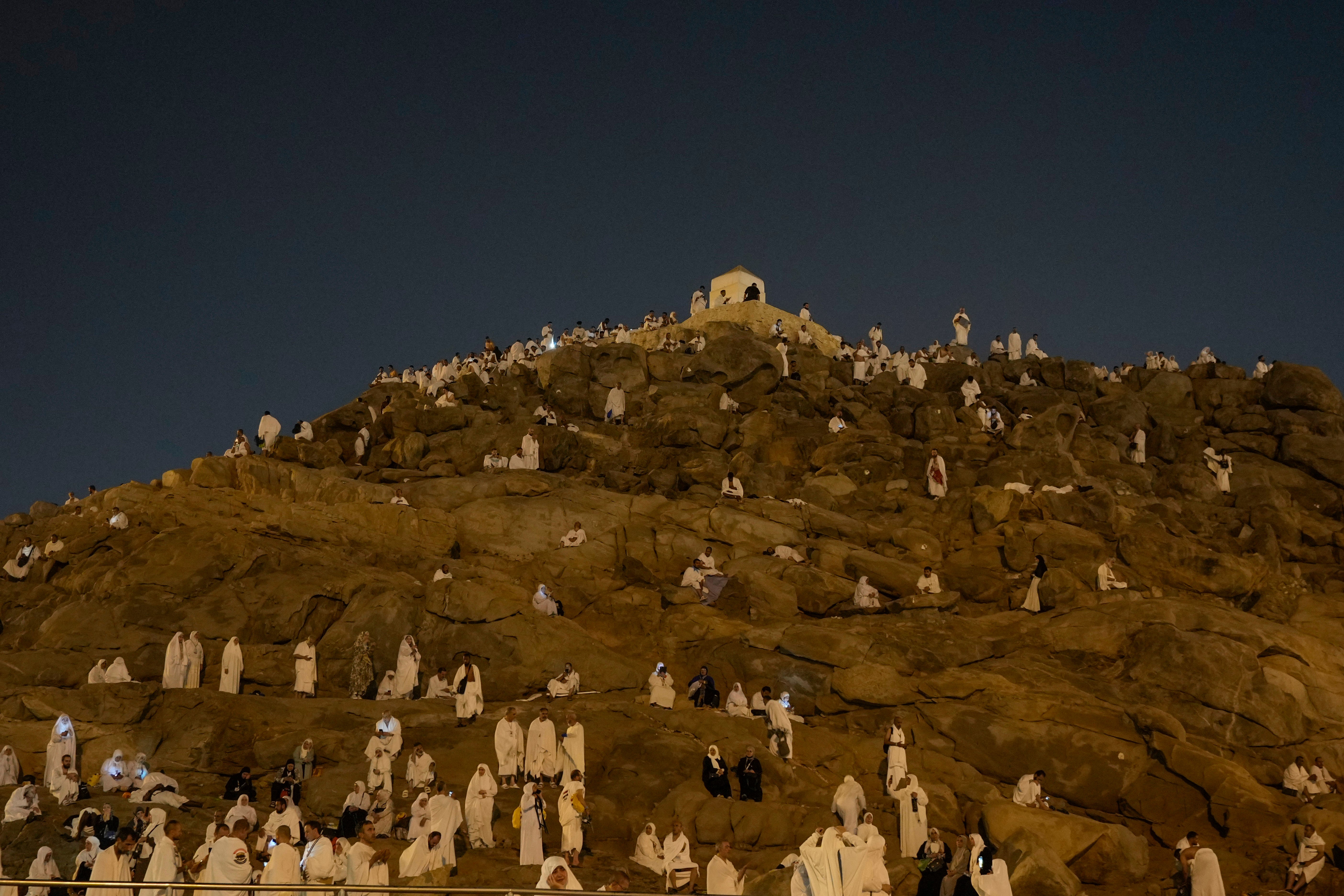
Sign up to the Independent Climate email for the latest advice on saving the planet
Get our free Climate email
At least 14 Jordanian pilgrims have died during the annual hajj pilgrimage in Saudi Arabia amid scorching temperatures.
Jordan’s foreign ministry said 14 of its nationals had died “after suffering sunstroke due to the extreme heat wave” during the performance of the hajj rituals.
They also said 17 others were missing and searches were continuing for them.
Jordan said it was coordinating with the Saudi authorities for the final rituals of the dead in Saudi Arabia, or transferring them to Jordan.
Saudi Arabia saw temperatures reach 47C on Sunday with temperatures at least 1.5 to 2C higher in Mecca and Medina, the two cities at the heart of Hajj pilgrimage. This year, more than 1.8 million Muslim pilgrims were expected to arrive, according to the Saudi General Authority for Statistics.

“The expected climate for Hajj this year will witness an increase in average temperatures of 1.5 to 2 degrees [Celsius] above normal in Mecca and Medina,” the head of the Saudi National Meteorology Centre, Ayman Ghulam, warned last week.
Several rituals during the pilgrimage are performed on foot with long walks, making it harder for vulnerable and elderly during the heatwaves.
Earlier, five pilgrims from Iran lost their lives, the Iranian Red Crescent chief, Pir Hossein Kolivand, said.

Mohammed Al-Abdulaali, a spokesperson for the Saudi health ministry, told reporters that more than 2,760 pilgrims suffered from sunstroke and heat stress on Sunday alone.
No more information on fatalities was provided. The searing temperatures were expected to continue on Monday on the day of Eid-al-Adha.
Authorities said they have set-up climate controlled areas and distributing water bottles to pilgrims. The pilgrimage will continue till Wednesday.
The Saudi health ministry also issued an advisory, asking pilgrims to stay hydrated and avoid being outdoors during the hottest hours of the day between 10am and 4pm.
Stampedes, tent fires, heat and other factors have caused hundreds of deaths during the pilgrim over the past 30 years.

Last year, at least 240 people died but cause of the death wasn’t specified. And in the worst Hajj disaster, a deadly crush in 2015 killed more than 2,000 people.
Temperatures across Asia have been brutally hot this year from the start of April. Scientists said heatwaves in south and southeast Asia as well as Middle East in April were made worse due to man-made climate crisis.
South Asia is still reeling under deadly heat with hundreds of deaths reported in India as temperatures touched 50C.

 6 months ago
23
6 months ago
23









